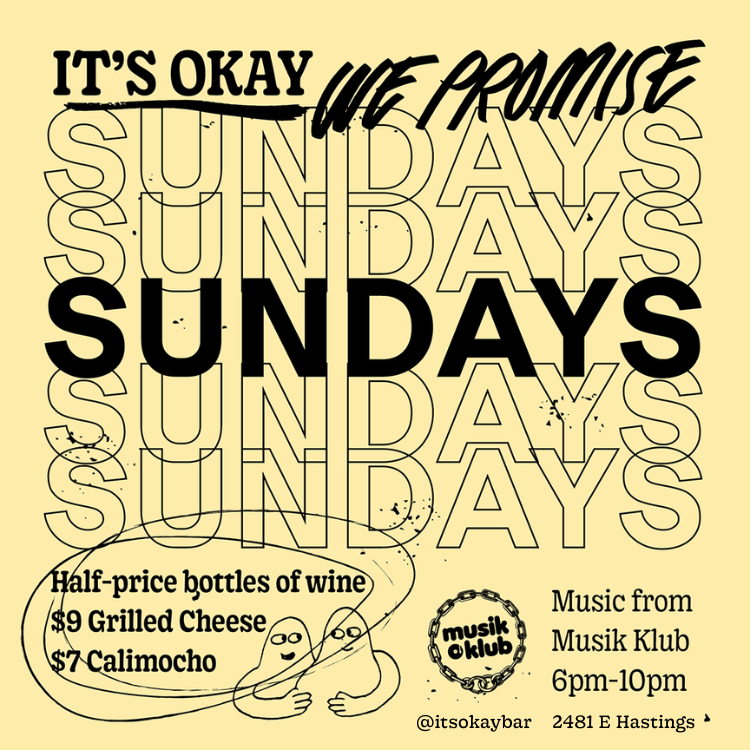For me, I stayed for so long because “it was just sex.” He was my partner, and that’s what I thought people did in relationships: they had sex. At the time, I had little to no sexual education. As I healed and processed it as an adult, I learned how pleasurable, consensual, and enjoyable sex can be, and one of the ways I learned this was through Kink. Once I was out of the abusive relationship, I felt free to research interests I had that were previously stifled. By reading first hand accounts from experienced Doms and subs in the lifestyle, I first stepped into it on my own. It was affirming to hear that others had the same interests, and that helped me accept and embrace my desires. From there I incorporated small low-risk aspects of Kink into my relationships to follow; impact play, bondage, and short term power exchanges were ways I could step into learning with a partner without being overwhelmed by the multitude of Kinks and practices out there. Over time, I brought more practices and Kinks into my relationships as my desires changed and as I met partners who had different interests. I have some interests presently that I would have never anticipated having, and there are some interests I have that I still struggle to accept. It’s all been part of this lifelong process of loving and accepting my Self in my totality.
With Kink, I was able to clearly lay out with a partner what I wanted to happen, have them explain what they wanted, and for us to find things that we both wanted to incorporate into a sexually-focused scene. If, part-way through, something was becoming less enjoyable or no longer desirable, I was able to call for a pause or halt. There wasn’t pressure for me to do anything, nor did anything happen that I didn’t want. Today, I can say that I really enjoy sex and Kink for the sake of pleasure, connection and healing with a partner. It’s largely a vulnerable and charged experience between myself and another. Giving my Self (my safety, my emotions, and my body) over to another person to care for in Kink (and/or sex) and enjoying it thoroughly is an experience that I didn’t think I would be able to have for a long time. Not to say that I am 100 per cent past my experiences of trauma, but that I am able to find comfort and pleasure in sexual interactions.
Obviously, not everyone who starts practicing or engaging in Kink has a history of sexual trauma or an abuse, nor is the Kink and BDSM scene free of instances of sexual assault, rape, and abusive relationships just as they occur in broader society. There are many people who engage in it for pleasure or connection in a way that is exciting for both partners. We’ve all heard, in one way or another, about stories of a long-married couple bringing some fuzzy handcuffs into the bedroom to spice up their Saturday evening romp. So, whether you are an individual looking to explore Kink or a couple wanting to bring some new energy into the bedroom, there are aspects of Kink we can all incorporate into our sex lives, and ways of engaging in it that are responsible. For anyone who may be entirely new to Kink, feel free to read the definitions below. If you think you have a handle on it, feel free to scroll past.
Kink: Non-conventional sexual practices, concepts, or fantasies that are consensual between adults engaging in it to enhance their intimacy with one another.
Fetish: Sexual fixation on certain object/act/body part that is not inherently a sexual object/act/body part. Tied to the psychological need for that fixation to be present to experience pleasure/orgasm.
BDSM: An acronym standing for: Bondage and Discipline, Dominance and Submission, Sadism and Masochism. It is meant to cover a wide range of activities and interests with endless variations of practice.
Play: It usually follows another word meant to specify what kind of activities the person(s) will use in a given scene. It can be a mentally, physically, or sexually stimulating activity (or some combination). For example Edgeplay (an umbrella term for riskier activities in the whole of Kink and BDSM), Impact play (involving instruments that strike/hit the body like flogging, paddling, spanking).
R.A.C.K: Risk Aware Consensual Kink vs. S.S.C: Safe Sane Consensual: Typically, RACK is used to talk about responsible Kink because it encompasses edgier play and the conversations that have to happen for it to proceed.
Vanilla: A term used to refer to anyone who doesn’t involve Kink or BDSM practices in their sex life or relationships. This includes a lack of consent and negotiation talks that happen prior.
Vulnerability: The courage to be oneself fully, sharing thoughts, feelings, challenges, and weaknesses. It involves uncertainty, risk, and emotional exposure by talking about X and can create a deeper connection.
Intimacy: Feelings of emotional closeness and connectedness with another person. Characterized in relationships as mutual trust, caring, and acceptance. It can involve sexual activities in certain relationships.
What is vulnerability (in the context of Kink)?
Vulnerability and intimacy in relationships can help individuals thrive and grow alongside each other. It looks different in various relationship configurations, but some of the things it might help with are mutual empathy, emotional safety, a stronger connection, and a willingness to solve difficulties in the relationship together. When there are different levels of comfort with vulnerability/intimacy, a relationship can struggle, especially if a person believes their partner will not be open to a conversation that they want to have, to resolving a conflict, or whatever else is going on in a relationship. It’s a pretty common experience for a person to have experienced either being on the end of not wanting to be vulnerable or the one wanting to have the other be vulnerable with them (I know I’ve definitely been both!). In the end, vulnerability and intimacy are about conversation, communication, and striving to understand the other and their needs. With Kink, a lot of these same concepts and principles are present either before, during, or after play/a scene.
Informed consent is a huge part of Kink. It’s often an ongoing conversation with one’s partner to discuss what kinds of play are going to be involved, what is a no-go, and who will receive and give stimulation/play. There are misconceptions about receiving and giving, topping and bottoming, dominating and submitting–even within the BDSM community and practitioners. When talking about bottoming, it is solely the act of receiving stimulation, whereas topping is giving it. Many Dominants can be on the receiving end of various kinds of acts or play, and thus be “bottoming” in a scene. The power dynamic doesn’t dissolve if the submissive performs an act on/for the Dom, in fact, it likely strengthens the dynamic. As a candid example, consider oral sex. If your partner is giving you head, they are “topping” you as the “bottom.” Now, add a Kink element: say you are the Dominant for this scene, and you order your submissive to perform oral sex on you. Despite you being the Dom, you are the “bottom” in this play and scene, and the power dynamic is still in place. When thinking about who’s going to give or receive, we don’t need to think as narrow as the Dom always giving, and the sub always receiving. It’s fun to mix it up and play around with roles and acts.

So, how do you practice responsible Kink?
It all starts with a conversation. In the early stages of incorporating Kink into a relationship, it’s important to have this conversation when neither of you are intending to have sex or Kinky play right after. I say this because you want to be able to have an in depth conversation about what both of you want out of your Kinky interactions without pressure. Asking questions like: “is it going to happen within the confines of the bedroom?” “Are you interested in incorporating a specific dynamic of power play?” “What Kinks are we both interested in doing and to what degree?”
Planning out what you both want out of Kink and this new way of interacting is an important part of informed consent. While spontaneity may be something you both value in your sexual interactions, you want to ensure that there are at least some guidelines for what the range of play is. A last minute surprise isn’t always the best course of action, especially if you are considering adding any form of Edgeplay. There may be training or research to do before incorporating what you both have talked about, which is why it’s best practice to not jump into Kinky play right after the conversation. As time goes on, you might have this conversation as needed to incorporate or remove things from play with practice and preference. However, there are several topics that you’ll want to revisit often, such as safe words, gestures, aftercare, and debrief.
Safe words and Safe gestures
One of the first topics you’ll want to breach with your partner will be safe words and safe gestures (gestures are used in the event that one person is gagged or otherwise unable to speak). Make sure to choose a word or gesture that neither of you would commonly use during sex. The last thing you want is to choose something that can be easily confused with enjoyment. Names of vegetables work well. For example, I use “Tomato” (I hate them, the texture is awful). Some people even use a series or set of words/gestures to communicate different levels of urgency. For example, level one: feeling discomfort that needs to be addressed and is non urgent. Level two: I want to keep going, but something is currently keeping me from enjoying this, or I need to pause for a moment. Level three: full stop, get me out, I’m done. These different levels can speak to different scenarios, you might use a level one word when you notice a knot is a bit too tight, whereas level two might speak to the position you are in as hurting your body or that you are ready to stop soon. Of course, we all have different thresholds, so make sure to keep communication channels open. It is recommended that for people just starting out with Kink to not use gags until you get a sense of your partner’s threshold, and the usual time limit before you hit it. It’s better to err on the side of caution than to find out you didn’t notice your partner’s safe gesture and their discomfort and/or fear could have been avoided.
Aftercare
I operate from the belief that all people need aftercare of some form after Kinky play. Sometimes people overlook aftercare for either both individuals in the scene, or only arrange aftercare for the one in the submissive role, when Dominants need it just as much. Aftercare is a process of reconnecting with the Self, the environment, and (sometimes) the other person. It’s the calming down that follows the prolonged “high” or euphoria that people can experience when engaging in Kink. It can look different for everyone, as everyone has their own needs. Talking about aftercare and arranging it ahead of the scene/play is important so that all parties are taken care of and/or know how to care for the other. For some, it might be more connection between the two of you: cuddling or a massage. For others, aftercare might be wanting some space and time to take care of themselves alone. Some people even arrange for aftercare to be done by a friend versus the partner they had the scene with. It can last any length of time, and you might find yourself wanting a whole day to take care of yourself and your partner following a scene, depending on how intense it was.

Debrief
Finally, there’s the debrief; this is often the most important step. It’s a conversation following the play and aftercare, where you both discuss what you liked, what could have been done better, and if there was anything that went unexpectedly. If something did happen that went differently than expected or caused fear in one of you that was unexpected, this conversation becomes even more important. Figuring out how to move forward, whether that’s removing or modifying the play/act for next time, will foster safety and further trust for future interactions. Even if you end up not incorporating Kink into your current or future relationships, seeing if your partner is up to debriefing after future sex can help to increase connection and pleasure between one another. Being able to tell your partner candidly about what you liked during sex with them, and what didn’t work as well or was less enjoyable, can help inform them to what preferences you have in bed.
So what can you do if you want to explore a little more, or breach the topic with your partner about incorporating Kink into your sexual interactions?
To start, there is a wealth of information that can be found with Google. Pop “Kink and BDSM resources” into the search bar and read articles, see what aligns with your existing beliefs about relationships and sex, what doesn’t sit well, and what you want to learn more about. If you have an interest in a particular Kink, or set of Kinks, then read up on those, figure out to what degree you are interested in exploring it. Is it something you are more interested in reading erotic fiction or first-hand accounts on? Is it something you want to explore with a partner (current or otherwise)? Or is it just a fantasy for you with nothing you want to act on? Whatever you choose to do with your Kinky interests is up to you!
To get you started, here are some places you can check out:
Kink Resources: Here you can find a reading list, a link to an article for beginners to Kink (Kink 101), and a reading list for people specifically looking for more information on power relationships and dynamics.
BDSM & Kinky Resources: In addition to being a resource on it’s own full of articles, this site has a list of podcasts, blogs, books, and other websites that they recommend.
A short twitter thread by @askasub on Twitter further defining Vanilla.
“This isn’t everything you could possibly know, and we definitely don’t think we have all the answers… the only real rules of BDSM are consent and communication.” – Loving BDSM




